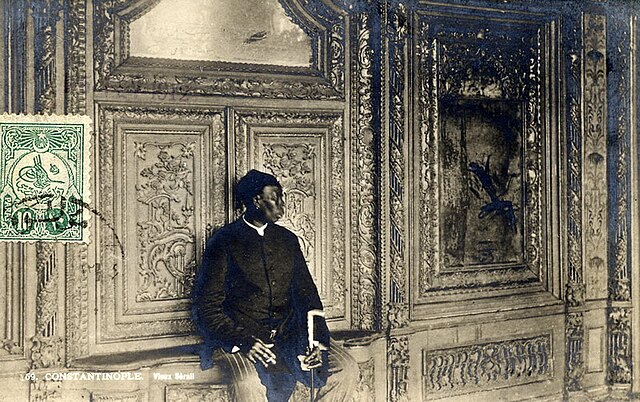A gallus was a eunuch priest of the Phrygian goddess Cybele and her consort Attis, whose worship was incorporated into the state religious practices of ancient Rome.
Relief of an Archigallus making sacrifices to Cybele and Attis, Museo Archeologico Ostiense, Ostia Antica
Funerary relief of an Archigallus from Lavinium, mid-2nd century AD, Capitoline Museums, Rome
Statue of a gallus priest, 2nd century, Musei Capitolini
A eunuch is a male who has been castrated. Throughout history, castration often served a specific social function. The earliest records for intentional castration to produce eunuchs are from the Sumerian city of Lagash in the 2nd millennium BCE. Over the millennia since, they have performed a wide variety of functions in many different cultures: courtiers or equivalent domestics, for espionage or clandestine operations, castrato singers, concubines or sexual partners, religious specialists, soldiers, royal guards, government officials, and guardians of women or harem servants.
The Harem Ağası, head of the black eunuchs of the Ottoman Imperial Harem
A group of eunuchs. Mural from the tomb of the prince Zhanghuai, 706 AD.
Limestone wall relief depicting an Assyrian royal attendant, a eunuch. From the Central Palace at Nimrud, Iraq, 744–727 BCE. Ancient Orient Museum, Istanbul.
Chief Eunuch of Ottoman Sultan Abdul Hamid II at the Imperial Palace, 1912







